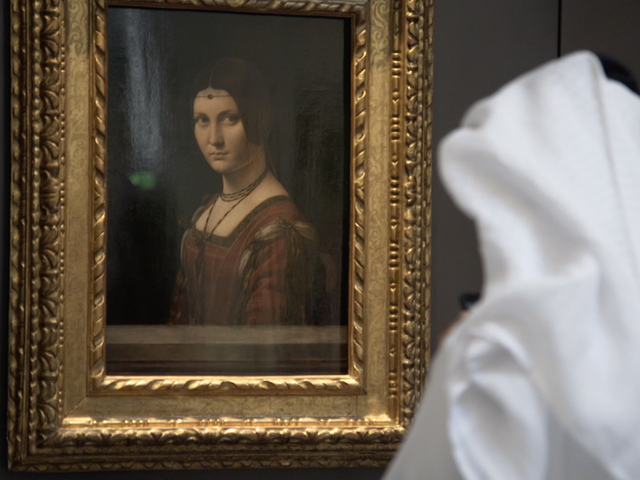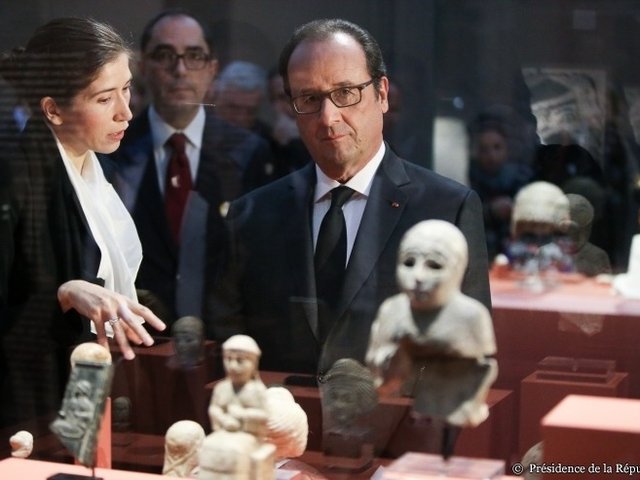The United Arab Emirates have led Islamic countries in unequivocally condemning iconoclasm carried out in the name of Islam. At the conference on safeguarding endangered cultural heritage, held on 2 and 3 December in Abu Dhabi, Sheikh Mohammed bin Zayed Al Nahyan, Crown Prince of Abu Dhabi, said, “The destruction of heritage sites by terrorist groups, and illicit trafficking by groups that aim to obliterate the international heritage of humanity, are rejected by all God-given religions and human nature”.
Hitherto, there has been only muted condemnation in the Middle East of the destruction wrought by fundamentalist Islamists over the past two years at Palmyra, Nimrud and in Timbuktu, to mention only the most famous sites. Middle Eastern media reveal that this is partly due to anger at the West apparently caring more about stones than flesh and blood. A minority have publicly expressed support for Isil’s view that these monuments are haram—forbidden—but the number of actual sympathisers with this point of view is not known and must vary very much between Lebanon at one extreme and Wahabi Saudi Arabia at the other.
It was therefore highly significant that the Grand Imam of Al Azhar mosque in Cairo—the closest that Sunni Islam gets to an accepted voice of authority—gave his support to the conference the day before it opened. Ahmed Al Tayeb said, ''I am delighted at this generous initiative, which incorporates the cultural meaning and human values that bring the East and the West together to seek to repair the damage caused by the barbaric terrorism and destruction by extremists.''
The conference was organised jointly with President Hollande of France, who said at the event, "This work is part of the battle led by France and the UAE against obscurantism, for openness and culture. It is also the reason for the creation of the Louvre Abu Dhabi. This great Franco-Emirati project opening next year will be the first universal museum in the Arab world."
Speakers came from the Middle East and North Africa; from Mali, Germany, France, Poland, Switzerland, Greece, Bosnia-Hergovina, Japan, the US and elsewhere. Among them was the general of the recently formed unit of the Italian Carabinieri specialising in the protection and care of monuments in times of war, and the Patriarch of Babylon of the Chaldaeans, one of the most ancient sees in the Catholic Church, who spoke of the total loss that monasteries have suffered in Iraq.
The head of the cultural section of the Swiss federal civil protection described a former arms store near Zurich that would be suitable for housing works of art, and the new law (Art 12 CPPA) that would enable Switzerland to take on works of art, under the aegis of Unesco, that needed a safe haven until their own countries were able to have them back.
This was relevant to one of the two main objectives of the conference, which was to propose a network of safe havens for the safeguarding of cultural property endangered by armed conflicts or terrorism on their own territory, or if unable to be secured at a national level, in a neighbouring country, or as a last resort, in another country. The conference heard about a precedent for this, which was the evacuation of the contents of the Prado to Geneva during the Spanish civil war.
The other main objective was the establishment of an international fund “for the protection of endangered cultural heritage in armed conflict, which would help finance preventive and emergency operations, fight against the illicit trafficking of cultural artefacts, as well as contribute to the restoration of damaged cultural property”, to quote the formal declaration at the end of the conference.
France has started the fund off with $30m, the UAE has added $15m, and it is expected that public and private contributions will take it to at least $100m. In this regard, a promising statement was made by the delegate from China’s State Administration of Cultural Heritage, He Liu Yuzhou, who said that China shared the sufferings of countries whose heritage was being destroyed, and that it would support the fund “with contributions that corresponded with China’s status”.
The money will be vested in a foundation to be based in Geneva and the model of governance may well be that of the Global Fund to Fight AIDS, Tuberculosis and Malaria, whose counsel, Gülen Atay Newton, explained how this public-private foundation operated both centrally and on the ground.
These two aims were formally stated at the end of the conference in the Abu Dhabi Declaration, with a clear affirmation of support also for the role of the United Nations and its institutions, particular Unesco, and an appeal to the UN Security Council to support the achieving of these goals.
Full image caption: (Front row L-R) The Aga Khan, Sheikh Jassim bin Hamad Al Thani , representing the Emir of Qatar, Prince Khalid al Faisal, governor of Mecca Region, Saudi Arabia, Ashraf Ghani, president of Afghanistan, Sheikh Mohamed bin Rashid Al Maktoum, vice-presidentof the UAE and ruler of Dubai, François Hollande, president of France, Sheikh Mohamed bin Zayed Al Nahyan, crown prince of Abu Dhabi, Sheikh Sabah Al Ahmad Al Jaber Al Sabah, emir of Kuwait, Abdrabbuh Mansour, president of Yemen, Ibrahim Boubacar Keita, president of Mali, Hailemariam Desalegn, prime minister of Ethiopia, Sheikh Nasser bin Hamad bin Isa Al Khalifa, of the Bahraini ruling family, Yusuf bin Alawi bin Abdullah, foreign minister of Oman, (R, 2nd row) Alexis Tsipras, prime minister of Greece (3rd L), Denis Zvizdic, chairman of the council of ministers of Bosnia and Herzegovina (4th L), Jack Lang, president of the Institut du Monde Arabe (5th L), Mohamed Khalifa Al Mubarak, chairman of Abu Dhabi Tourism & Culture Authority (6th L), Irina Bokova, director general of UNESCO (7th L) and other dignitaries, during the Safeguarding Endangered Cultural Heritage Conference in Abu Dhabi. The UK sent an under-secretary from the Department of Culture, Media and Sport, Tracey Crouch (3rd row, 4th R)



